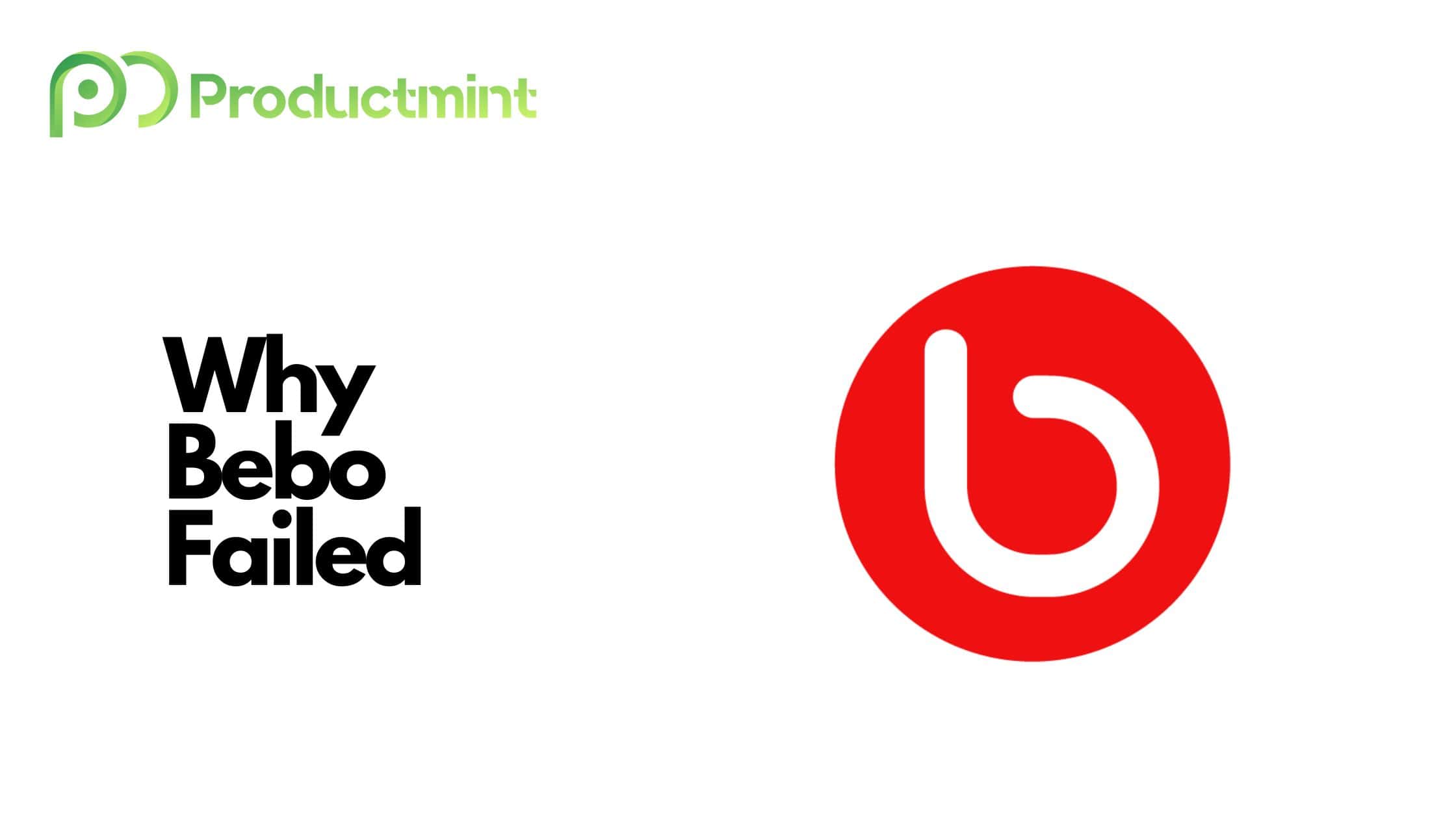Executive Summary:
Bebo was a social media site on which users could set up their own profiles and connect with other members.
Bebo failed because it couldn’t keep up with its competition and to AOL’s unwillingness to invest in the platform.
What Is Bebo?
Bebo is primarily known as a social media site on which users could set up profiles and connect with other members.
Each Bebo user was given their own unique mini-homepage, which they then used to represent their interest (such as favourite bands or movies), share pictures or videos, create polls, and so much more.
Users could either communicate with each other through the profile’s dedicated message boards or via direct messages.
Bebo did not require users to be direct friends to send each other messages. A loose connection, for instance having common friends, was sufficient in this regard.
And unlike former powerhouses like Myspace, users didn’t have to know HTML and other types of programming languages to customize their personal page. Instead, Bebo offered standardized templates that members could use.
Bebo later added the ability to consume videos and other forms of media. Much like YouTube, members would be able to create videos or even share music playlists.
After being acquired by AOL for hundreds of millions of dollars, Bebo has since gone through multiple ownership and product changes.
How it came to be, who is behind it, and what ultimately led to its demise will all be covered in the coming sections.
What Happened to Bebo? Detailing Its Rise and Fall
Bebo, formerly headquartered in San Francisco, California, was launched in 2005 by husband-and-wife duo Michael Birch and Xochi Birch as well as Tyler Hayes.
However, this certainly wasn’t Michael’s and Xochi’s first entrepreneurial rodeo. Michael graduated with a bachelor of science degree in physics from Imperial College London back in 1992. Imperial College also ended up becoming the place where Michael met his wife Xochi.
He spent the next years working for various insurance companies but ultimately became fed up with the industry’s lack of innovation. Reminiscing about his time as an employee, Birch told The Irish Times in a 2015 interview that “If you work in insurance, there’s great motivation to leave. My father was an entrepreneur so I got the entrepreneur bug off him.”
Meanwhile, internet startups were raking in billion-dollar valuations and making their owners wealthy beyond imagination. Eventually, in 1999, Michael decided to give it a go as well.
Ironically, he promised his wife that he would spend no more than three months in startup land and return to the corporate world if things didn’t work out. Those three months eventually turned into three years but Michael still hadn’t made a penny.
Michael had dabbled in a variety of ideas. His group of failed experiments included self-updating address books and a babysitting network, among others.
Around the same time, in 2002, the small family decided to move from London to San Francisco – and things finally took a turn for the better.
The husband-and-wife duo had launched previously launched BirthdayAlarm.com, a birthday reminder service using eCards. By 2003, the site began to make $10,000 a month from advertising alone.
A year later, they started charging for cards and things just took off. All of the sudden, BirthdayAlarm was making over $300,000 per month. Throughout 2004, the site made over $3.5 million.
Michael also got his feet wet in the social networking domain. In fact, Bebo wasn’t actually his first successful endeavour in the space. In 2003, he sold Ringo, which offered many of the features that made Bebo so popular, for $2 million to Tickle.com.
Armed with millions in his bank account, he sought to build something even bigger. At the time, Myspace was the biggest player in town while interest in social networking pioneer Friendster was slowly starting to fade. Facebook, for its part, had just been launched and slowly spreading from college campuses across the nation.
“When we planned the site, all the cool, short names were taken,” he recalled in an interview with The Guardian when planning to launch Bebo. “But after we bought it we invented an acronym for it: blog early blog often.”
After months of work, with Michael being the primary person responsible for writing code, Bebo was finally unveiled to the public in 2005.
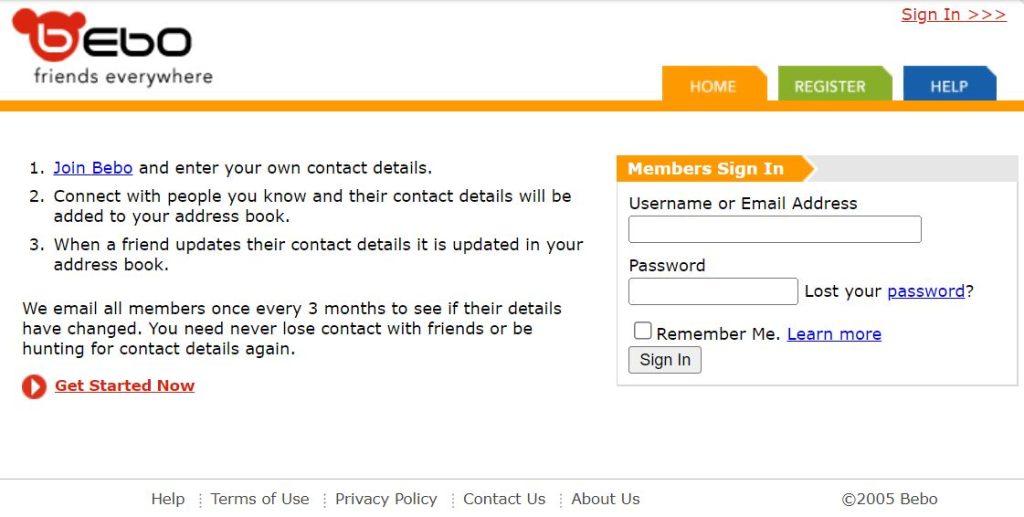
Michael, his wife, and the rest of the team employed a few smart growth hacks to get the young social network off the ground. For example, they would advertise it on BirthdayAlarm, which at that point had millions of monthly visitors.
They also launched a quiz feature that became extremely popular and prompted users to invite their friends onto the platform. And unlike Myspace, users didn’t have to know HTML to be able to customize their pages, which made Bebo much easier to navigate.
Lastly, the team made the early decision to market itself outside of the United States, where Myspace and Facebook were dominating, and instead expand across the pound and into the United Kingdom.
Bebo’s member count, a year into the business, had already swollen to over 20 million users, many of whom were teenagers.
The impressive growth prompted Benchmark Capital to invest $15 million into the company in March 2006.
Unfortunately, much like the many platforms that came before and after it, cyberbullying would also become a major issue on the platform. Bebo, to its credit, introduced a variety of different security and moderation measures to address the problem.
Nevertheless, Bebo continued to grow at a rapid pace, in large part due to the partnerships it managed to close. For example, it signed a distribution agreement with mobile networking provider Orange, an ad sales deal with Yahoo, an integration with Microsoft’s Live Messenger, and many more.
In November 2007, Bebo unveiled a product called Open Media in an effort to compete against the likes of Hulu and YouTube. Partners, which included heavy hitters like CBS, MTV, the BBC, ESPN, and more, could display their content on the site.
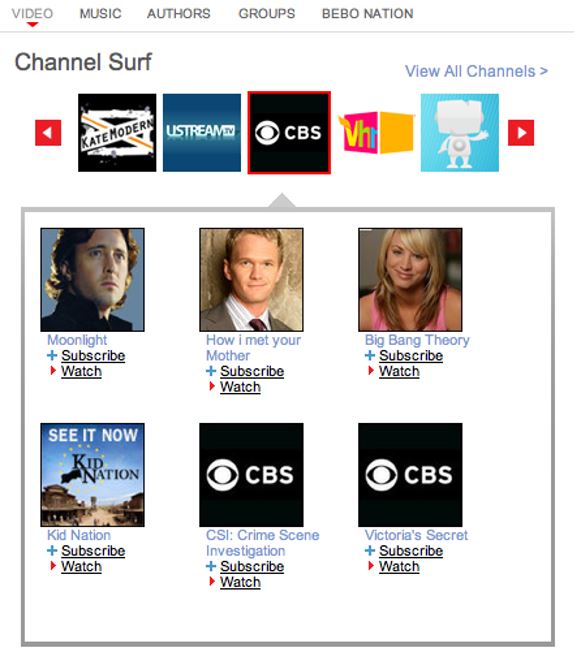
Users were already spending close to 50 minutes a day on the platform. With the introduction of video content, Bebo’s team hoped to significantly up that time. By the end of 2007, the platform already managed to amass a user base of over 40 million people.
It, therefore, came as little surprise when, in August 2008, AOL announced that it would purchase Bebo for $850 million. Myspace, just two years prior, had been bought by News Corp for $580 million. Microsoft acquired a 1.6 percent stake in Facebook for $240 million in 2007.
AOL’s goal with the purchase was to strengthen its internet business and move away from being a dial-up broadband provider. The company’s goal was to marry its existing product suite, namely AIM and ICQ, with a social network.
Furthermore, Michael and Xochi Burch netted around $600 million from the sale, with the rest going to Benchmark and key employees. Both Michael and Xochi also stepped down from their respective roles a few months after the acquisition.
Michael went on to launch a startup incubator, which he would use to experiment with various business ideas. In September 2010, for example, he launched Jolitics.com, a social network focused on politics.
A few months after the acquisition, in December 2008, AOL unveiled a major update of Bebo including a social inbox that pulled in e-mail and social activity from a variety of competing platforms.
Other initiatives included the introduction of five new language versions as well as a clone version of Bebo for the Latino market. Unfortunately, AOL couldn’t stop Bebo’s rapid demise.
By the summer of 2009, it became evident that Facebook would overtake everyone from Bebo to Myspace or Friends Reunited. Growth at all competing networks significantly cooled down while most of their existing users marched over to Facebook.
It, therefore, did not surprise too many when rumours about a potential shutdown began to emerge in the spring of 2010. Those rumours ultimately proved to be true. Hedge fund Criterion Capital Partners acquired Bebo for a measly $25 million in June 2010.
AOL, for its part, sold the company to create a meaningful tax deduction and thus boost its bottom line for that year.
Criterion Capital Partners acquired the company to use it as a cash flow generator by simply capitalizing on its brand name. After all, the site still had around 6 million active users, which would mean continuous ad revenue for the foreseeable future. And the cost of running the business was fairly low since Bebo only employed around 20 people at the time.
Criterion’s lack of involvement would soon lead to all kinds of legal troubles. After two years of consistent declines and inactivity, co-founders Michael and Xochi Birch as well as various investors filed a lawsuit against Criterion Capital Partners and its CEO Adam Levin.
The lawsuit alleged that Levin had exploited the company and its resources (such as said brand recognition). For example, he paid himself a monthly salary of $14,000 as Bebo’s CEO although he was hardly ever present in the office.
He, furthermore, did not conduct a board meeting in 20 months, withheld key financial information from investors, and even led the Bebo website to go dark for 2 days without any form of interference.
After a year of back and forth, Levin finally departed from the company in February 2013. Three months later, Bebo voluntarily filed for Chapter 11 Bankruptcy. Michael Birch, during the bankruptcy auction, managed to purchase the firm for around $1 million.
Fun Fact: He thought that an initial bid of $200,000 would be sufficient. However, Tinder owner Match.com eventually drove up the price to $1 million.
He hired a new CEO, Shaan Puri, to rebuild the site and get it back on track. In December 2014, Bebo relaunched as a messaging app for teens.
The launch was inspired by the success of other social media apps, in particular Snapchat, which had taken the teenage world by storm by introducing disappearing messages, stories, AR features, and so forth. The relaunched app was packed with features that would appeal to teenagers who had once made Bebo so popular.
For example, the app would allow users to create dedicated avatars who could even slap each other. Bebo also experimented with a rip-off version of the then-popular Flappy Bird.
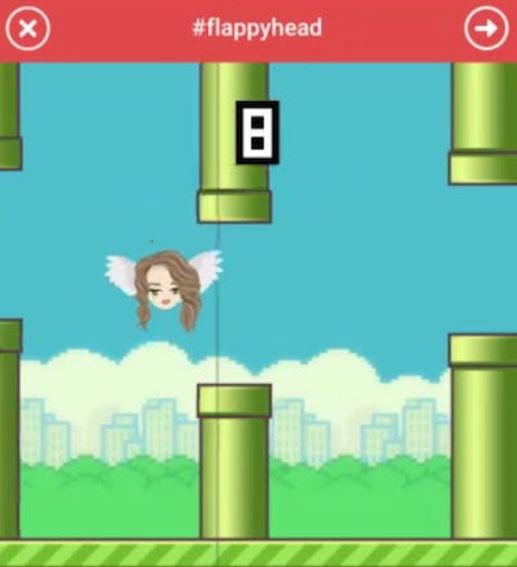
Unfortunately, the messaging experiment was ultimately short-lived and made room for another experiment: streaming. Somewhere in 2017, Bebo rebranded into a streaming platform for gamers for which it hosted tournaments.
I certainly wouldn’t fault you if you thought that the streaming version of Bebo would end up becoming another dud. However, that wasn’t the case here.
In June 2019, streaming giant Twitch announced that it had acquired the revamped Bebo for $25 million. Even the likes of Discord and… wait for it… Facebook previously tried to purchase the company.
The Bebo team mostly joined Twitch to work on the platform’s Rivals product. Michael Birch was actually not operationally involved with the streaming version of Bebo and thus wasn’t part of the group that moved over to Twitch.
But yet again, it wasn’t the last we heard of Bebo. In February 2021, as part of a pandemic project, Michael Birch announced that he would relaunch Bebo with a focus on profiles and real-time interactions.
If a user logged on to the new Bebo, they would be immediately presented with all of the friends that are online at the same moment. Bebo ultimately remained a pandemic project and was shut down once again months after the revamp.
These days, when visiting Bebo.com, you will be greeted with the following message:
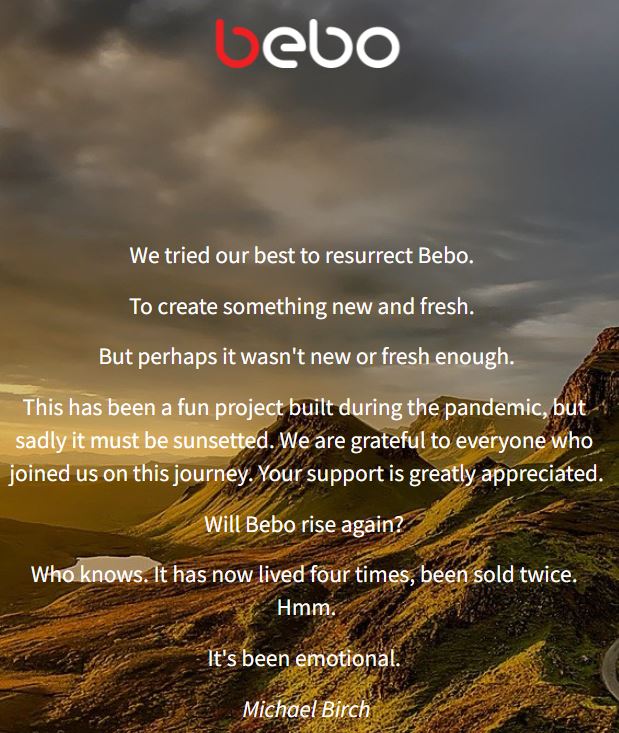
And as Michael Birch said, who knows if it will ever come back or not…
Why Did Bebo Fail?
Bebo failed because it couldn’t keep up with its competition and to AOL’s unwillingness to invest in the platform.
For once, Facebook alone had raised hundreds of millions of dollars in venture funding versus the $15 million that Bebo had received.
As a result, Facebook was not able to employ significantly more engineers. And once its growth started to explode around 2007, it was also able to hire the most talented engineers – a crucial competitive advantage among tech companies.
In comparison, Bebo only employed around 100 people at its peak, the majority of whom were not even engineers.
Facebook had also expanded into other regions much earlier. Meanwhile, it took Bebo until early 2009 to add five additional languages on top of its two existing ones (English and Polish).
Therefore, it would have required AOL to invest substantially more monetary resources into Bebo. Instead, AOL actually began to lay off or move Bebo employees into other departments.
But why was AOL so keen to essentially self-sabotage its acquisition? Because of Bebo’s demographic. AOL misjudged Bebo’s user base and thought it would get a social network with a broad audience appeal.
Instead, it discovered that most of Bebo’s users were teenagers, which are traditionally harder to monetize (especially since AOL was relying on ad sales). The great financial crisis further added to AOL’s financial constraints.
Naturally, being in a corporate wheel the size of AOL also slowed down decision-making time. Myspace suffered from a similar fate after being bought by News Corp. Facebook, on the other hand, remained nimble and hungry.
Eventually, strong social network effects made it impossible to catch up with Facebook – and ultimately caused the death of Bebo and so many other social networks.
